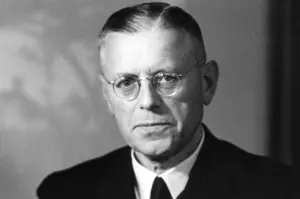University Chronology

On 14 November 1647, Bamberg’s Prince Bishop Melchior Otto Voit von Salzburg established the Academia Bambergenis when he added faculties of philosophy and theology to expand the Jesuit college that had grown out of a cathedral school originally founded by Emperor Henry II.
Within a year, Emperor Ferdinand III and Pope Innocent X had conferred all academic privileges onto the young university, paving the way for its ceremonious opening as Academia Ottoniana in 1648.
By 1735, Prince Bishop Friedrich Carl von Schönborn had expanded the academy further by adding a faculty of law.
Prince Bishop Adam Friedrich von Seinsheim’s subsequent establishment of a faculty of medicine completed the institution’s transformation into a classical four-faculty university.
In 1773, it received the name Universitas Ottoniano-Fridericiana.
Although the four-faculty university was dissolved in 1803 during the prince-bishopric’s secularisation, the study of theology and philosophy continued in a newly established Bamberg Lyceum.
In 1923, this Lyceum gained the status of a higher education institution for philosophy and theology.

This College of Philosophy and Theology was closed once again on 9 October 1939. In the long history of the University of Bamberg, teaching and lectures ceased only during the National Socialist period.
The planned dissolution of the university did not, however, come about. Six years later, on 10 October 1945, itreopened with the permission of the American military government.
In 1947, President Benedikt Kraft (pictured) called for the expansion of the College to form a fourth Bavarian state university.
More information on this topic (in German)
Teaching continued after the war, especially in law, the natural sciences and pharmacy. But the institution retained the limited status of a College of Philosophy and Theology, and, as a result, these subjects, which had never previously been part of its profile, were disbanded again, leaving only philosophy, theology, and a professorship in art history. Due to critically low enrolment in this latter subject, plans to replace the art history professorship with a one in pastoral theology were contemplated.
For a time, the entire institution appeared to be on the brink of dissolution, but it ultimately merged in 1972 with the University of Education that the University of Würzburg had founded in Bamberg in 1958. The new institution formed by the merger was known as the Comprehensive University of Bamberg.
The comprehensive university became a true university again in 1979.
Restructuring during the 1970s had led to the establishment of three new faculties, and in 1979, the university was composed of:
- a Faculty of Catholic Theology
- a Faculty of Education, Psychology and Philosophy
- a Faculty of Historical and Geographical Sciences (founded in 1975)
- a Faculty of Linguistics and Literature (founded in 1977)
- a Faculty of Social Sciences, Economics, and Business Administration (also founded in 1977)
- a Department of Social Work

On 1 October 1988, the university adopted its current German name of “Otto-Friedrich-Universität Bamberg”.
This harks back to the name used in the eighteenth century, “Universitas Ottoniano Fridericiana”, and includes the names of the university’s founder Melchior OTTO Voit von Salzburg (pictured on the left) and its great champion FRIEDRICH Carl von Schönborn (pictured on the right) – in a conscious reaffirmation of the tradition of the old universities.
Since the year 2000, the University of Bamberg’s history has been marked by restructuring across the entire university sector. Strivings to site research in larger geographical contexts have driven extensive changes to higher education policy. Individual higher education institutions have become hubs in their respective research regions that are also embedded in national and even international research and higher education landscapes.
In the 2004 strategy paper “Vision UniBay 2010”, the presidents of the eleven Bavarian universities sketched out their ideas for a necessary and opportune restructuring of the Bavarian university landscape.
The University of Bamberg restructured and repositioned itself during this process and ceded its university of applied sciences disciplines to Coburg. Since 2007, the university has had the following structure:
- Faculty of Humanities
(the previous Faculty of Catholic Theology was decommissioned and merged into this faculty as the Institute of Catholic Theology) - Faculty of Human Sciences and Education
- Faculty of Social Sciences, Economics, and Business Administration
- Faculty of Information Systems and Applied Computer Science
(founded in 2001 from the Faculty of Social Sciences, Economics, and Business Administration)